There is an epidemic of bloodshed in the UK’s capital, and it is showing no signs of slowing down.
There have already been 11 fatal stabbing victims this year. Last year, there were 76 killed by knife crime.
The victims are predominantly teenagers, and we know that they are more likely to be targeted in the hours after they finish school.
It’s hard to see how the situation in London could possibly be sustainable, or spend a day off the front pages, if these were predominantly the children of politicians, journalists or lawyers. But the victims, and perpetrators, are mainly poor, and they are disproportionately black.
Black Britons – if not you and your own family, then your friends, workmates, and neighbours – face systemic disadvantages which are at the root of the complex causes of violent crime.
The grim statistics on the racial disproportionality of knife crime in the capital are a reflection of society’s failures in nurturing and protecting black boys, and people close to the issue – experts, victims and their families, activists – say it has more to do with class and deprivation than anything else.
But addressing the disproportionality head on is a thorny issue. The many public figures weighing in on the matter very rarely have any on-the-ground experience of the tragedies or realities of growing up in the inner city – the deprived communities where these crimes take place.
When controversial Sunday Times columnist Rod Liddle wrote last month that “half of black children do not live with their father. And we wonder why they’re dying’, there was understandable outrage.
But while campaigners have often accused the media of “racialising” the violent crime epidemic, and inferring that black males are inherently predisposed to criminality, there is a more complex debate to be had.
Speaking to a range of prominent voices across the black community as attacks escalate, many say there are in fact specific, systemic issues with how young black men are being treated, which is directly impacting on the levels of violence.
“By the end of 2018 it was widely accepted that London was at its bloodiest in almost a decade”
Last year the rapper Professor Green, a white man who has himself been a stabbing victim, said it was racist to present black youths as “the face of knife crime”, given that in parts of the country the majority of perpetrators and victims are white.
But the truth is that in London black males do account for a vastly higher number of victims and perpetrators of violent crime.
By the end of 2018 it was widely accepted that London was at its bloodiest in almost a decade. Figures showed almost half of murder victims and suspects were black, despite the group accounting for just 13% of the capital’s population, according to the 2011 census.
A Sky news Freedom of Information request to every police force in the country showed London was unique in the racial breakdown of knife crime – black men made up 44% of victims and 48% of suspects.
In contrast, white people in London make up 60% of the population, but only account for 35% of murder victims and 24% of murder suspects.
In February, during the Home Affairs committee which examined progress made in racial equality in the Met since the Stephen Lawrence murder, his mother, Baroness Doreen Lawrence, criticised the ongoing disproportionality.
She told the room: “If the amount of white kids were being murdered in our streets as the amount of black kids, society would not have sat back and allowed that to happen. But that’s allowed to happen to our kids.”
Speaking to HuffPost UK, Lawrence placed the blame squarely at the feet of the Metropolitan police.
“The police have allowed this to happen and if they had done something about it – things would be different. How many black kids are dying a week, and it doesn’t seem to touch middle England. So black families are suffering.
“We [the black community] are turning on ourselves and I have no idea what causes that. There’s a lot more work that needs to go into understanding where those young people are coming from - there’s a combination of contributing factors and everybody has their part to play in all of this.”
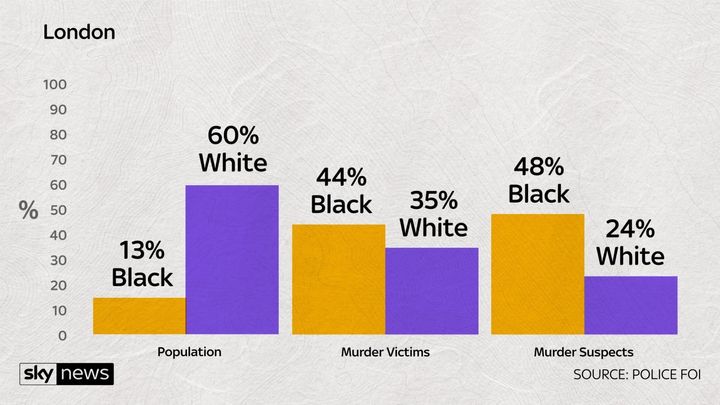
Lawrence said the turning point was the establishment of Operation Trident in 1998, a unit within the Met aimed at tackling homicide within London’s Afro-Caribbean communities.
She said: “The police saw it as ‘black on black crime’ and that they don’t need to do anything, as such. They saw it as: ‘these kids are killing themselves – so what?’ and did nothing about it, instead of dealing with it for what it was – crime. So we get to the stage now where it becomes commonplace that young black boys are dying.”
In January, 14-year-old Jaden Moodie died after he was stabbed by attackers who are believed to have deliberately knocked him off his moped.
At a media briefing following his death, the head of Waltham Forest police station was reluctant to comment on the issue of disproportionality among the victims. Richard Tucker told HuffPost UK: “It’s a complex issue. Inner London is very non-white; the population is very mixed. [...] The colour of someone’s skin and why they would be involved in that type of crime is a dangerous territory to go down – I wouldn’t want to do that.”
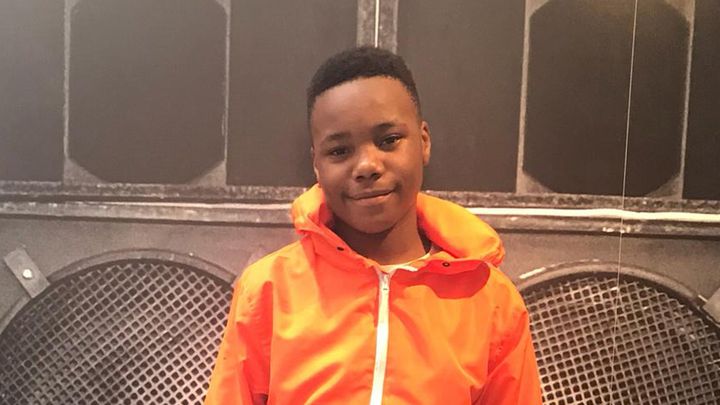
There is a clear divergence between what Lawrence is saying, and what the police officer charged with investigating the death of a young black boy in inner-city London is saying. But the lack of sophistication in the discourse around the violence means the issue of disproportionality is not being addressed fully.
Speaking to HuffPost UK, youth worker Samuel Jackson expressed concern about openly “stating the obvious” impact that violent crime is having on young black males.
“If you say certain things deemed to be in any way critical of the black community or drawing attention to the challenges we face and how it manifests into things like crime, you run the risk of having your ‘black card’ revoked, so to speak,” he said.
“You are seen as ‘a coconut’ [a racist term used to denote ‘brown on the outside, white on the inside’], someone who does not want to see the progression of black people in the UK – because you dared to be publicly critical and, in doing so, potentially give people from outside the community ammunition to be critical of us too. When we already under lots of scrutiny... particularly by racist parts of the press. That’s why many of us stay silent on the issue.”
Indeed, some people within the black community feel it is counterproductive to explore the disproportionality issue publicly, especially as that means engaging with the same media that is often accused of attacking the black community.
When initially approached for comment, campaigner Garvin Snell questioned HuffPost UK’s motives for covering this topic. He expressed concern over the frequent media inference that black males are predisposed to criminality.
“Why does it [the disproportionality] matter? Is it going to change the way that people deal with the situation?,” he said.
In August, Snell created a viral video that purports to teach self-defence techniques against a knife attack. He tells viewers he is going to show his son the best way to defend himself against an attacker, then when he picks up a knife and waves it, his son runs away.
It is a humorous way of making the very serious point that the best defence is to flee. The video has been viewed over two million times, receiving praise from police officers all over the country.
“It gets my back up sometimes, I think people say ‘knife crime is a black problem and we [wider society] do nothing about it – because it’s not our problem’,” he said.
“It almost feels like it’s another dig at the black community. We need to have an attitude that it’s a problem which affects all of us, so we all play our part.”
Agreeing with Baroness Lawrence’s point that the matter would be taken a lot more seriously if white teenagers were dying, Snell added: ″I don’t think pointing out disproportionality is unfair... but it should not be the main focus of the discussion. Asking why this is happening should be.”
Asked about Rod Liddle’s infamous column, Snell says, “it didn’t come across as though he was concerned and was exploring the reasons why. It was pointing the finger.”
Liddle has previously referred to black men as “savages” and blamed them for overall crime in the capital – writing: “the overwhelming majority of street crime, knife crime, gun crime, robbery and crimes of sexual violence in London is carried out by young men from the African-Caribbean community.
“In return, we have rap music, goat curry and a far more vibrant and diverse understanding of cultures which were once alien to us. For which, many thanks,” he added.
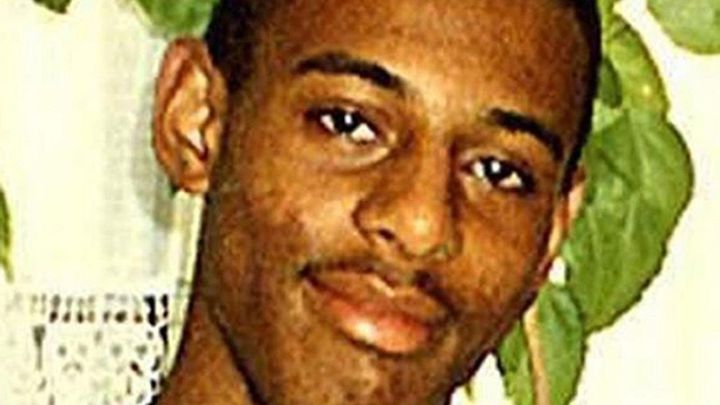
Greenwich secondary school teacher Antoine Coote said Liddle chose to focus on single parents “because it’s better than looking at the social explanations and society has failed black kids.”
Liddle is not alone in his diagnosis – columns and op-eds on London’s violent crime crisis often focus on one particular issue: lone parent, female-led, households.
But if race is an almost impossible topic to tackle in discussions around violent crime, the intersection of race and single parent families is even more delicate.
Data from the race equality thinktank the Runnymede Trust shows that 59% of black Caribbean children, 44% of black African children and 61% of children in mixed-race households grow up in single-parent families; the figure is 22% in the white community. Nine in ten of all lone-parent families are headed by a woman, so we are mainly talking about single mothers.
Those who work with gangs often talk about young men from single-parent families finding role model figures in gang ‘elders’, who are able to then lure them into a life of crime.
Lone-parent families are disproportionately more likely to feel the effects of poverty, according to the Family and Parenting Institute. Taking into account ongoing socioeconomic disparities, black families will feel this effect even more.
Zubaida Haque from the Runnymede Trust told HuffPost UK: “If single parent households were a strong predictor of crime, we would be a lot more worried about 1 in 4 children in this country. It is not single parents per se, it’s what it means to be a single parent.”
A high number of black and ethnic minority women are also in low-paid jobs and unstable work, and there is a broad consensus that lone black mothers are the societal group hardest hit by austerity.
Moreover, research shows that by 2020 this group will lose the greatest proportion of their individual income due to higher rates of poverty and discrimination based on class, race and gender.
And black women are hit from all sides. Since the 1980s unemployment rates among women of colour have remained considerably higher than for white women, with benefits being simultaneously slashed. In recent years, the unemployment rate has been higher for black women (10%) than for black men (7%), according to last year’s ONS Annual Population Survey.
This reality of earning money on an uneven playing field not only places time constraints on the ability to supervise children around the clock – it also makes it more difficult to stay financially afloat.
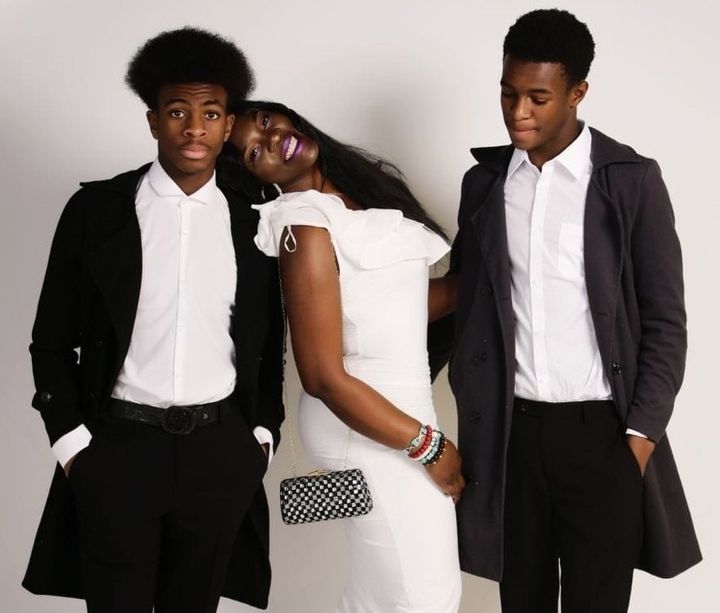
Perhaps the simplest answer to the cries of “where’s the mother?” is simple: she’s working to put bread on the table.
One day, Julia Asgill, a working single mother from Croydon, called her two sons – aged 14 and 16 – to find out why they were running late arriving to church from their regular football practice.
To the 37-year-old’s horror, her eldest said that they’re currently running away from boys armed with knives. Helpless, Asgill pleaded with them to head to a nearby uncle’s house for refuge.
“Their safety, as young black men, is a daily concern every time they leave the house,” she told HuffPost UK.
Following the government’s announcement of its intention to launch a public health model to tackle violence, MPs were granted time to debate this strategy in parliament in December. Fewer than 30 MPs attended. This came as research alarmingly highlighted that children might be most at risk of being stabbed as they make their way home from school.
Speaking at the debate, Streatham MP Chuka Umunna said: “Over 40 young people between the ages of 13 and 24 have died from violence this year in London alone—over 40—but there are fewer than 30 Members in the Chamber debating this important issue right now.
“What does she say to people watching these proceedings who think, ‘Do you know what? That lot just do not care’? Look at these empty green benches. How will the minister explain them to people watching right now?”
One Twitter user suggested that the lack of political attention is because “this does not affect their children or their circle”.

At a city level, the Mayor of London’s office acknowledges that young black men experience crime disproportionately, especially as victims. Speaking to HuffPost UK, they pointed to interventions such London’s Violence Reduction Unit and the Workforce Integration Network, specifically designed help to address the poor levels of employment among young black men and reduce their risk of poverty and alienation.
Their spokesman told HuffPost UK: “Engagement with communities is vital to address the difficulties of trust and confidence in police and other institutions that black Londoners experience.
“However, many of the issues are deeply ingrained, and have now been compounded by years of government cuts to the police and other frontline services like health, education and welfare. This has contributed to a rise in violent crime both in London and across the country. It’s a link accepted by the Home Office.”
The poverty rate for ethnic minorities is double that of white groups, according to research last year by the Joseph Rowntree Foundation.
Activist Lee Jasper said: “Poverty breeds violence and the black community has suffered disproportionate and growing levels of both in the last 20 years. So what we see today is the rank and bitter harvest, that was predicted to follow in the wake of the financial crash and the imposition of austerity.
“Broken communities, families without support, suffering stress, alcoholism, addictions, mental ill health, we are mashed by poverty, racism and violence and reeling from trauma.”
Financial pressures are huge on many of these young black men. One told a youth worker, known to HuffPost UK, that he is willing to risk a life of crime in which he could make the amount of money in a week that he’d legitimately make in a month.
This young male had just finished university and had been struggling to get a job in a market that sees black male graduates suffer the biggest ethnic pay gap – £4 an hour less on average than their white peers – with a 50% greater likelihood of being unemployed than their white counterparts.
Here are the facts facing ambitious young black Britons: they are statistically more likely to experience poverty, to have poorer educational outcomes, to be unemployed, and to come in contact with the criminal justice system.
Data shows that these black Britons are also less likely to receive the care and support they need if they are struggling with mental health problems, according to the Royal College of Psychiatrists.
Dr Kim Dulaney, professor of African-American Studies at Chicago State University, has actually made a correlation between racism experienced widely by the black community and post traumatic stress disorder.
“You generally see PTSD in people returning home from war. In the black community, it feels like war on your black body just because someone fears the stereotypes they have of black people in their imagination. Trauma is an emotional wound that can cause physical changes in a person.
“The impact of trauma can be substantial and can have lasting damage to psychological development in youth,” she told The Pittsburgh Courier.
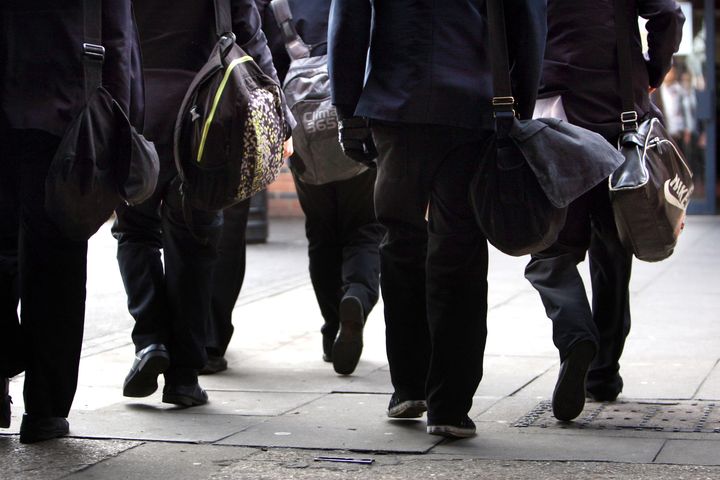
And before black Britons reach adulthood, the stats are stacked against them. The Race Disparity Audit highlighted that black Caribbean pupils were permanently excluded at three times the rate (0.29%) of white British pupils (0.1%).
Runnymede Trust deputy director Zubaida Haque told HuffPost UK: ″There is of course no single magic bullet to address knife crime, but school exclusions matter.
“It’s not difficult to connect the dots, but racial disparities in exclusions are not directly being addressed by the Department for Education or Ofsted; the vulnerability of black children being excluded from schools is completely being ignored.”
Haque argues that it is important to challenge the narrative that black boys are more likely to be the perpetrators and victims of violence because of characteristics apparently inherent in their culture or ethnic group.
“Studies with large numbers of black and white boys involved in crime have shown that when you take account of poverty and neighbourhood deprivation, black boys are no more likely to be perpetrators or victims of violence, compared to white boys. That tells you we should be addressing aspects of poverty and deprivation in order to bring knife crime down; not discussing race.”
If this feels like an assault of negative statistics, that’s because it is. And it reveals a truth – that certain ethnic groups bear the brunt of structural inequalities which can lead to an increase in certain types of crime.
Rebecca Hilsenrath, chief executive at the Equality and Human Rights Commission, said the criminal justice system needs to look “very carefully” to ensure there is no “unjustifiable disproportionality”.
“However, this is a complex issue and we need to take into account the wider context including educational attainment, role models and poor employment opportunities.”
Retired Met Police superintendent Leroy Logan told HuffPost UK that he thinks it is vital for authorities to recognise there is a “crisis” ongoing in London.
“I’ve been working on a non-parliamentary youth violence commission, for the last few years. A Safer Lives interim report in July shows that fear is one of the main issues behind someone carrying a knife,” he added.
“A lot of these young people are suffering from adverse childhood experiences, come from traumatised communities and, also, mental health is a big issue.
“So we’ve got a perfect storm of young people normalising violence because of trauma and they should not just be seen as suspects but also safeguarding cases. They are not to be seen as just prisoners but also patients.”

Married father-of-two Marvyn Harrison, of Dope Black Dads, a group of black fathers who came together to change the conversation around fatherhood and race, perhaps summed up the complexity of disproportionality best.
“Too many of the victims and perpetrators are black from a human cost perspective, but the legacy of why is more important that the statistics as a headline,” he told HuffPost UK.
“You fix the ‘why’ and you fix the problem and narrative.”
In the absence of open and honest discourse surrounding the causes and symptoms of violent crime in the capital, as well as tangible social and legislative change to even out the playing field, campaigners fear that the problem of disproportionality within this epidemic will only worsen.

